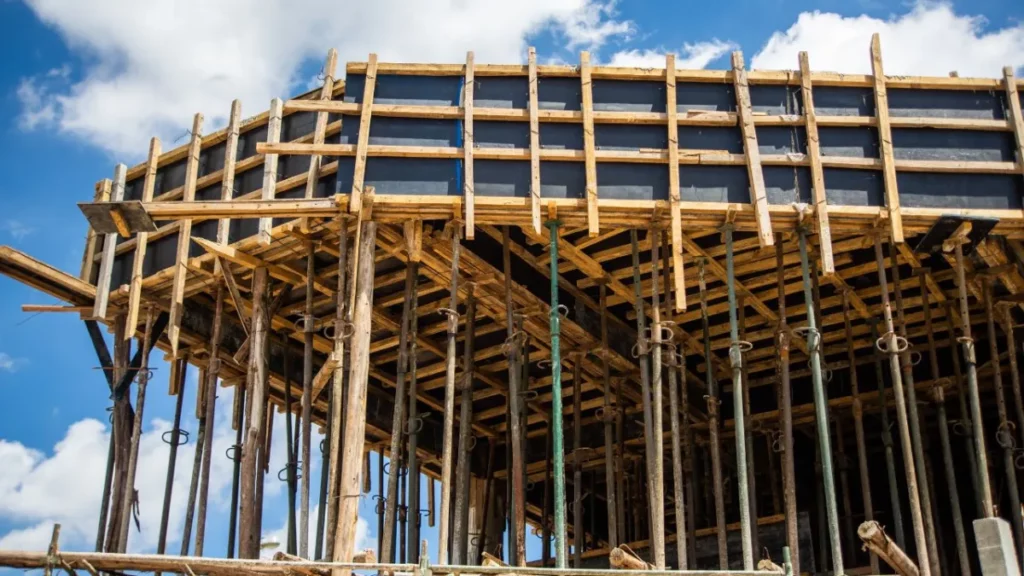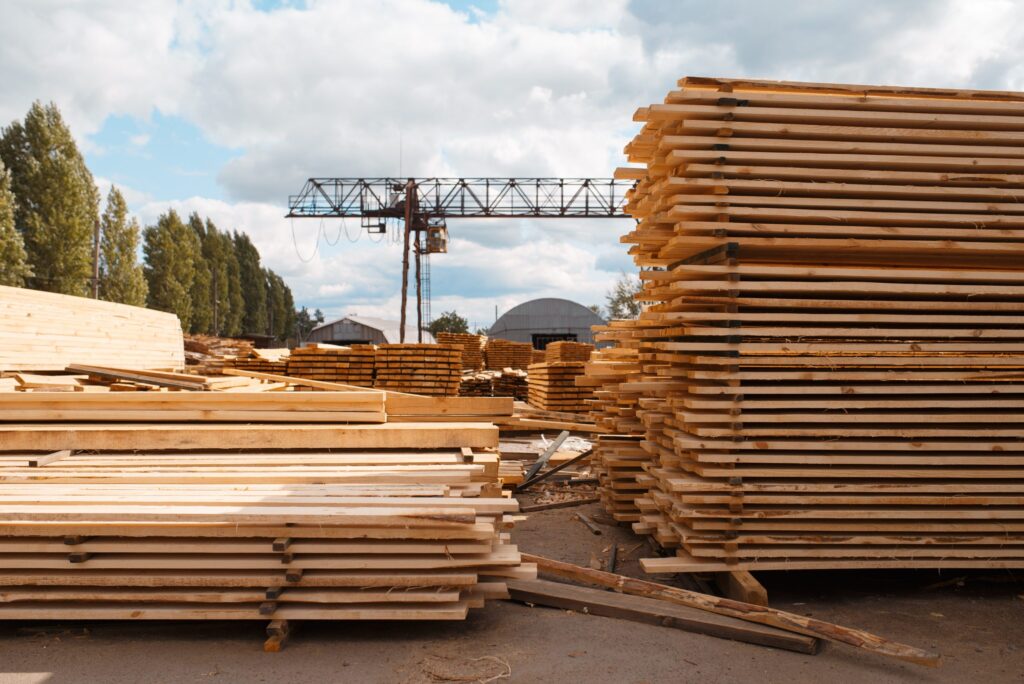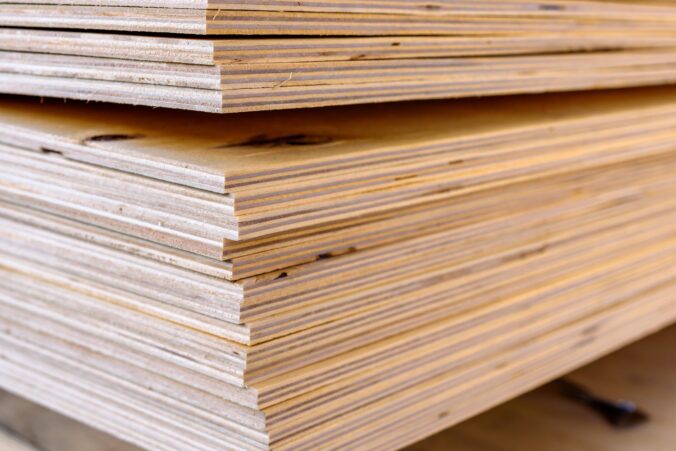Plywood is a versatile engineered wood product that has become a staple in the construction industry. Among various grades of plywood, F14 grade plywood stands out due to its unique properties and application advantages. This article will explore the essence of F14 grade plywood, its quality evaluations, common applications in construction, and handling considerations.
What is F14 Grade Plywood?
F14 grade plywood is a specific classification of plywood that has been designed to meet stringent performance standards. It is constructed from multiple layers of wood veneers, which are glued together with the grain of each layer oriented in different directions. This method increases the strength and stability of the board while minimizing the risk of warping. The careful selection of wood species also plays a crucial role in achieving the desired properties, ensuring that the plywood not only meets the required specifications but also exhibits an attractive appearance suitable for visible applications.
The Basics of F14 Grade Plywood
F14 grade plywood is primarily used in structural applications due to its high load-bearing capacity. It has a minimum bending strength of 14 MPa, making it suitable for various construction projects. The number ’14’ in its name refers to its performance standard as defined by Australian and New Zealand Standards (AS/NZS 2269). This ensures that it can withstand the demands of heavy usage in building activity. Additionally, F14 plywood is often subjected to rigorous testing to confirm its performance under different conditions, including exposure to extreme temperatures and humidity levels, which further solidifies its reputation as a reliable building material.

Key Characteristics of F14 Grade Plywood
Some of the standout characteristics of F14 grade plywood include:
- Strength: The plywood offers significant structural strength, making it ideal for load-bearing applications.
- Durability: Its multi-layer construction enhances durability and resistance to wear and tear.
- Moisture Resistance: Designed to resist moisture, F14 plywood is suitable for outdoor and humid environments when treated correctly.
- Versatility: The range of thicknesses and finishes allows for diverse applications in various construction areas.
Moreover, F14 grade plywood is often favored for its eco-friendly credentials, as it can be sourced from sustainably managed forests. This not only contributes to environmental conservation but also appeals to builders and architects who prioritize green building practices. The plywood can be easily machined, allowing for precise cuts and finishes, which makes it a popular choice for both commercial and residential projects. Whether used in flooring, wall sheathing, or furniture making, F14 grade plywood offers a combination of performance and aesthetic appeal that is hard to beat.
In addition to its structural applications, F14 grade plywood is also utilized in the manufacturing of various products, including cabinetry and decorative panels. The ability to apply different veneers and finishes means that it can be tailored to fit specific design requirements, making it a versatile choice for interior designers and builders alike. Its lightweight nature, coupled with its strength, allows for easier handling and installation, reducing labor costs and time on site. As construction techniques continue to evolve, the demand for high-quality materials like F14 grade plywood is likely to grow, further solidifying its place in modern building practices. Learn more about versatile at https://versatileeducation.com.pk/
Quality of F14 Grade Plywood
The quality of F14 grade plywood is paramount for ensuring the integrity and longevity of construction projects. Understanding how to evaluate this quality is crucial for contractors and builders alike. F14 grade plywood is particularly favored in structural applications due to its strength and durability, making it a preferred choice for both residential and commercial constructions. Its ability to withstand various environmental factors while maintaining its structural integrity sets it apart from lower-grade alternatives.
Evaluating the Quality of F14 Plywood
To assess the quality of F14 grade plywood, several factors need to be taken into consideration:
- Surface Inspection: Check for visible defects such as knots, splits, or open joints that may compromise the integrity of the plywood. A thorough surface inspection not only highlights potential issues but also provides insight into the overall craftsmanship of the plywood.
- Thickness Measurement: Ensure that the actual thickness aligns with the specifications, as discrepancies could affect load capacity. Accurate thickness is essential, especially in load-bearing applications, where even minor deviations can lead to significant structural problems.
- Bond Quality: The adhesive used in the layers should be checked to verify that it meets waterproof standards for appropriate applications. The bond quality is critical, as it determines how well the layers of plywood will hold together under stress and moisture exposure.
- Certification: Verify that the product is certified according to the relevant Australian standards. Certification not only assures quality but also provides a level of accountability for manufacturers, ensuring that they adhere to industry best practices.
Quality Standards for F14 Plywood
F14 plywood must adhere to quality standards established by AS/NZS 2269. These standards ensure that the product is subjected to rigorous testing for various attributes including bonding strength, moisture resistance, and general performance in structural applications. Compliance with these standards reflects on the reliability and safety of the material for construction. Additionally, F14 plywood is often subjected to environmental testing to evaluate its performance in diverse conditions, such as high humidity and temperature fluctuations, which are common in many Australian climates.
Moreover, the manufacturing process of F14 plywood plays a significant role in its quality. Advanced techniques, such as rotary peeling and hot pressing, are employed to enhance the plywood’s structural integrity and durability. These methods not only optimize the use of timber resources but also contribute to the plywood’s resistance to warping and delamination. As a result, builders can have greater confidence in the performance of F14 plywood, knowing it has been engineered to meet the demands of modern construction while promoting sustainability in the timber industry. Click here to read more about resistance.
Applications of F14 Grade Plywood in Construction
F14 grade plywood is widely recognized for its usefulness in various construction settings. Its strength and versatility open up multiple applications in both residential and commercial projects. This type of plywood is manufactured to meet specific performance standards, ensuring that it can withstand the rigors of construction while providing a reliable foundation for various building elements.
Common Uses of F14 Plywood in Building Projects
Common applications of F14 grade plywood include:
- Flooring Substrates: Often used as a base for flooring due to its solid load-bearing characteristics, F14 plywood provides a stable surface that can support heavy loads and resist warping over time.
- Wall Sheathing: Serves as a structural element for walls, providing support and stability. Its ability to resist moisture and decay makes it an ideal choice for exterior applications, ensuring longevity and durability.
- Roofing Components: Functions effectively in roof sheathing, assisting with the overall structural integrity. The lightweight nature of plywood allows for easier handling and installation, which can significantly reduce labor costs.
- Formwork in Concrete Construction: Provides a durable and robust surface for concrete to set against in construction projects. The smooth finish of F14 plywood minimizes imperfections in the concrete, leading to a better final product.

Benefits of Using F14 Plywood in Construction
Using F14 grade plywood in construction offers numerous benefits, including:
- Cost-Effectiveness: Compared to solid wood, plywood is often more affordable while delivering similar or improved performance. This cost efficiency allows builders to allocate resources to other critical areas of the project.
- Eco-Friendly Option: Plywood can be made from sustainably sourced wood, presenting an environmentally-friendly alternative to other materials. Many manufacturers are now adopting practices that prioritize sustainability, making F14 plywood a responsible choice for eco-conscious builders.
- Ease of Work: Plywood can be easily cut, shaped, and worked with, making it a manageable option for contractors. Its lightweight nature also means that it can be transported and handled with less effort, streamlining the construction process.
In addition to these benefits, F14 grade plywood is also known for its excellent resistance to warping and splitting, which is crucial in maintaining the structural integrity of buildings over time. This resilience is particularly important in regions that experience fluctuating temperatures and humidity levels, as it helps to prevent costly repairs and replacements. Furthermore, the aesthetic versatility of plywood allows it to be used in visible applications, such as cabinetry and decorative wall panels, where it can be finished to enhance the overall design of a space.
Moreover, F14 plywood is often treated with various coatings and finishes that enhance its durability and resistance to environmental factors. These treatments can provide additional protection against moisture, pests, and fire, making it suitable for a wide range of applications, from residential homes to commercial buildings. As the construction industry continues to evolve, the demand for high-quality materials like F14 plywood is likely to grow, further solidifying its place as a staple in modern building practices.
Purchasing and Handling F14 Grade Plywood
When considering F14 grade plywood for construction, knowing how to purchase and handle it is essential to maximize its performance and longevity.
Tips for Buying F14 Grade Plywood
Here are some tips to consider when purchasing F14 grade plywood:
- Supplier Reputation: Choose suppliers with a solid reputation in the industry, known for providing quality materials.
- Delivery Conditions: Ensure you understand how the plywood will be delivered and whether it maintains quality standards during transport.
- Bulk Purchase Discounts: Consider buying in bulk for significant projects, as suppliers often offer discounts.
- Sample Testing: If possible, request sample pieces to test for quality before committing to larger orders.
Best Practices for Storing and Handling F14 Plywood
Proper storage and handling of F14 grade plywood can significantly extend its lifespan:
- Store in a Dry Area: Keep plywood in a dry, sheltered area to avoid exposure to moisture.
- Elevate Off the Ground: Use pallets or racks to elevate plywood, preventing water absorption from the ground.
- Keep Covered: If stored outdoors, cover with a waterproof tarp to protect against rain and humidity.
Find about f17 grade plywood at: F17 Grade Plywood
Safety Considerations when Using F14 Grade Plywood
While F14 grade plywood offers many benefits, safety considerations are vital when working with this material.
Safety Precautions for Working with F14 Plywood
To ensure safe handling and usage, consider following these precautions:
- Use Personal Protective Equipment (PPE): Always wear safety glasses and dust masks when cutting or sanding plywood.
- Maintain Good Ventilation: Ensure adequate ventilation when working indoors to reduce exposure to wood dust.
- Handle with Care: Be cautious when lifting large sheets to avoid strains and injuries.
Environmental Impact of F14 Grade Plywood
The production of F14 grade plywood can have environmental implications, but these can be managed through responsible sourcing and processing. Utilizing timber from sustainably managed forests can mitigate environmental impact and promote responsible forestry. Additionally, manufacturers that prioritize eco-friendly adhesives and finishes contribute to reducing harmful emissions associated with plywood use.
In conclusion, F14 grade plywood is an essential material in modern construction, combining durability, strength, and versatility. Understanding its properties, quality evaluations, and safe handling practices will not only help in making informed purchasing decisions but also enhance project outcomes in construction endeavors.

Leave a Reply